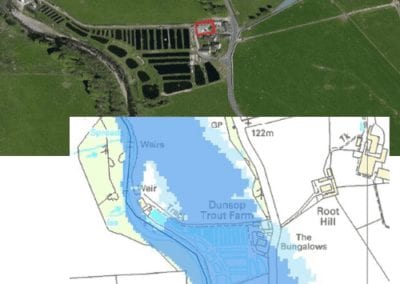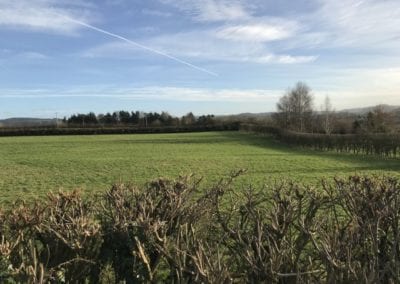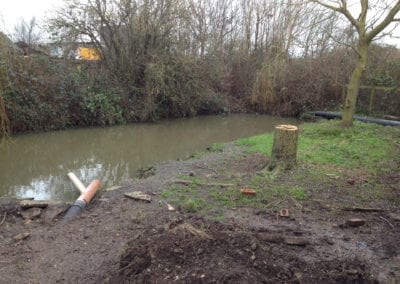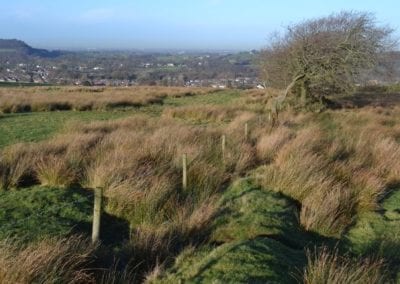In-situ testing determines the physical properties of the soils upon which you will develop your site.
We carry out in-situ tests on or in the soil on your site. It is a relatively quick process and we are able to provide you with the resulting values immediately after testing.
Why do I need an in-situ test?
Our in-situ testing provides high quality data for the behaviour of soil and rock, under well controlled stress conditions. This will determine whether the ground conditions on your site are suitable for your development.
Why use us?
- Established over 20 years
- One-stop multidisciplinary
- In-house land drilling with rigs
- Collection of technical experts
- Ex-local authority regulators in our team
Our in-situ testing can consist of the following:
Standard penetration test
We carry out this dynamic test in boreholes during the site investigation process. The test provides a means of estimating the relative density of granular soils and shear strength characteristics of cohesive soils.
We drive a standard 50mm diameter split barrel sampler (cohesive soils) or a 60° cone (granular soils) into the ground at the base of the borehole through repeated blows from a drop hammer of mass 65kg, falling a distance of 760mm. The test is driven a total of 450mm into the soil and the number of blows recorded for the final 300mm penetration is recorded as the ‘N’ value.
Shear strength
We can assess the undrained shear strength of cohesive soils using handheld instruments such as a hand shear vane, which records the resistance to shear against a rotational force applied by hand equal to one revolution per minute. We can also assess the shear strength by Pocket Penetrometer, a device which measures the resistance of a piston of 0.32sq/cm being inserted into the soil under test.
Concrete coring
We can obtain concrete cores at various diameters, typically 100mm, 150mm or 200mm using rig mounted and handheld coring equipment, to allow an assessment of an existing floor slab to be made. The core allows a visual assessment to be undertaken, identifying the size and nature of clasts, the matrix and whether a reinforcing bar is present. The recovered core can then be tested for its unconfined compressive strength. Cores can also be obtained by horizontal coring through concrete walls.
Soakaway testing
Soakaway Testing allows us to assess the drainage properties of the site. We dig a pit, and perform tests in accordance with BRE 365. The results will allow an assessment of the suitability of the ground to support the installation of Sustainable Drainage Systems (SuDS).
Plate bearing test
The Plate Bearing Test can be undertaken using a 300mm, 450mm or 600mm diameter plate to obtain the in-situ deformation characteristics of soil, the results can be provided as an equivalent California Bearing Ratio (CBR), Modulus of Subgrade reaction (k762) or ultimate bearing capacity (kN/m2).
California bearing ratio (CBR)
The California Bearing Ratio (CBR) test is an empirical measure of soil strength. It is most often used on subgrade for road design and construction to determine the thicknesses of materials to be used. The stronger the material being tested, the higher the CBR value, which can lead to thinner layers of material being used, which in turn can reduce construction cost.
The CBR test often forms part of the overall site investigation and is useful for determining the thickness of materials needed for the proposed construction.
We can obtain the CBR value of a soil by several means. This could be through Plate Load Testing, when information for pile mat design or for mobile crane operations is required. We can also assess the CBR value of the soil using more rapid means such as a Dynamic Cone Penetrometer (DCP), which allows a profile of the shallow soils to be obtained to a depth of c. 1mbgl. We can also assess CBR values of the ground at discrete depths using the Clegg Hammer.
Lightweight deflectometer (LWD)
The LWD test measures the bearing capacity of soils placed in earthworks. The results obtained can be converted to an equivalent CBR value, confirming the suitability of the placed material.
The LWD utilizes a 300mm diameter plate and the zone of influence extends to between 1 and 1½ times the plate diameter making it ideal for testing layers up to 450mm thickness. The LWD allows rapid testing of placed and compacted material.
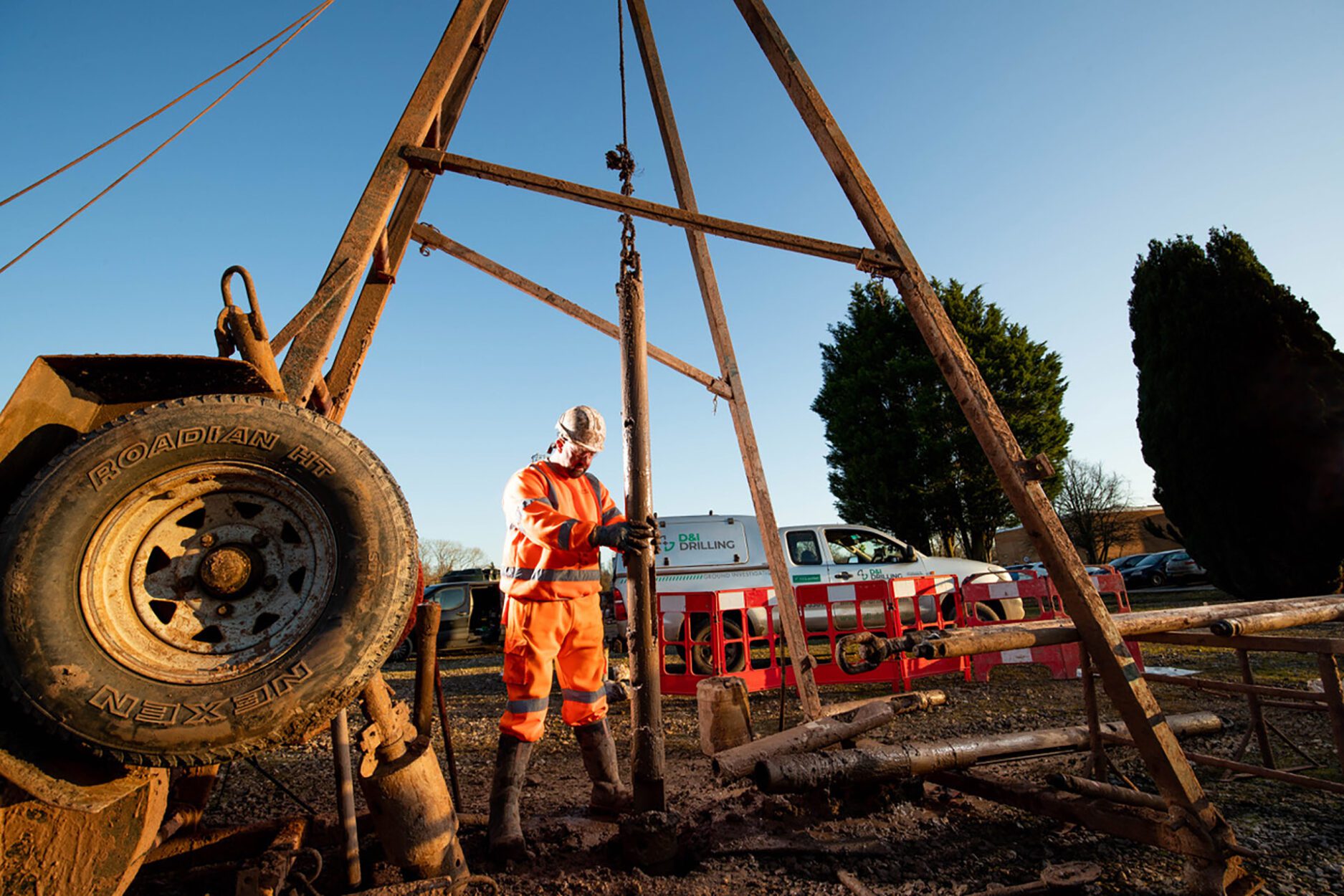
Standard penetration test
We carry out this dynamic test in boreholes during the site investigation process. The test provides a means of estimating the relative density of granular soils and shear strength characteristics of cohesive soils.
We drive a standard 50mm diameter split barrel sampler (cohesive soils) or a 60° cone (granular soils) into the ground at the base of the borehole through repeated blows from a drop hammer of mass 65kg, falling a distance of 760mm. The test is driven a total of 450mm into the soil and the number of blows recorded for the final 300mm penetration is recorded as the ‘N’ value.
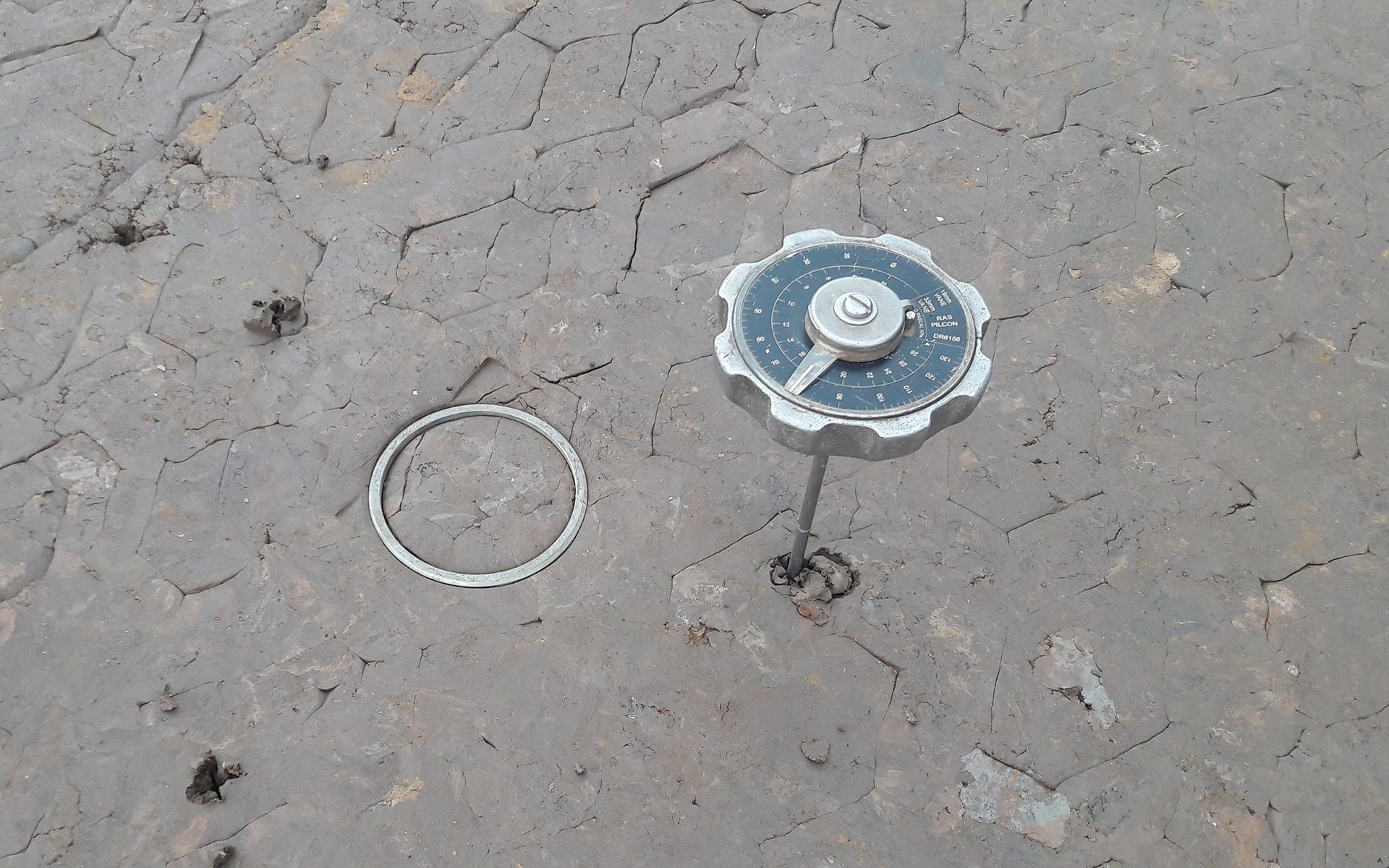
Shear strength
We can assess the undrained shear strength of cohesive soils using handheld instruments such as a hand shear vane, which records the resistance to shear against a rotational force applied by hand equal to one revolution per minute. We can also assess the shear strength by Pocket Penetrometer, a device which measures the resistance of a piston of 0.32sq/cm being inserted into the soil under test.
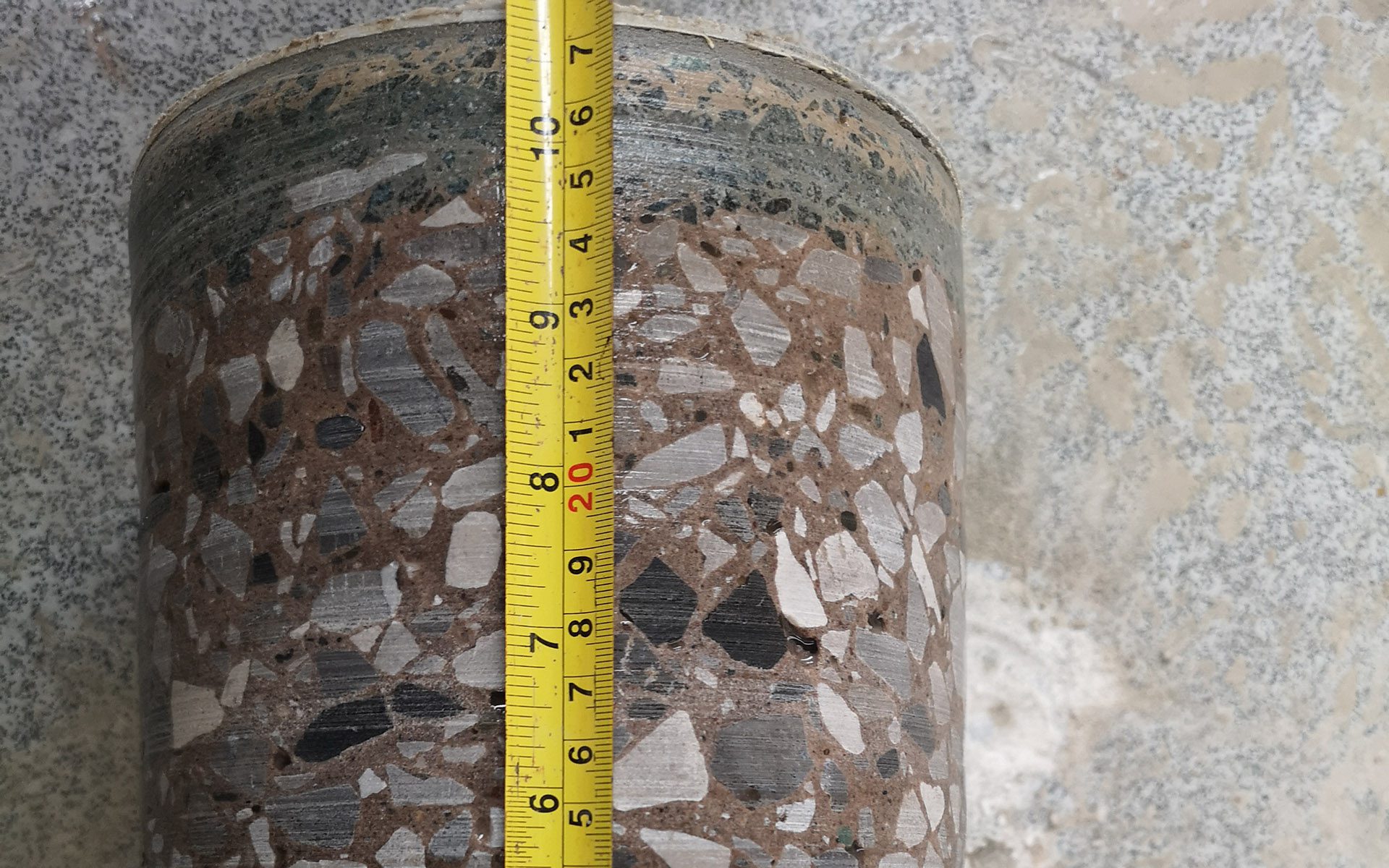
Concrete coring
We can obtain concrete cores at various diameters, typically 100mm, 150mm or 200mm using rig mounted and handheld coring equipment, to allow an assessment of an existing floor slab to be made. The core allows a visual assessment to be undertaken, identifying the size and nature of clasts, the matrix and whether a reinforcing bar is present. The recovered core can then be tested for its unconfined compressive strength. Cores can also be obtained by horizontal coring through concrete walls.
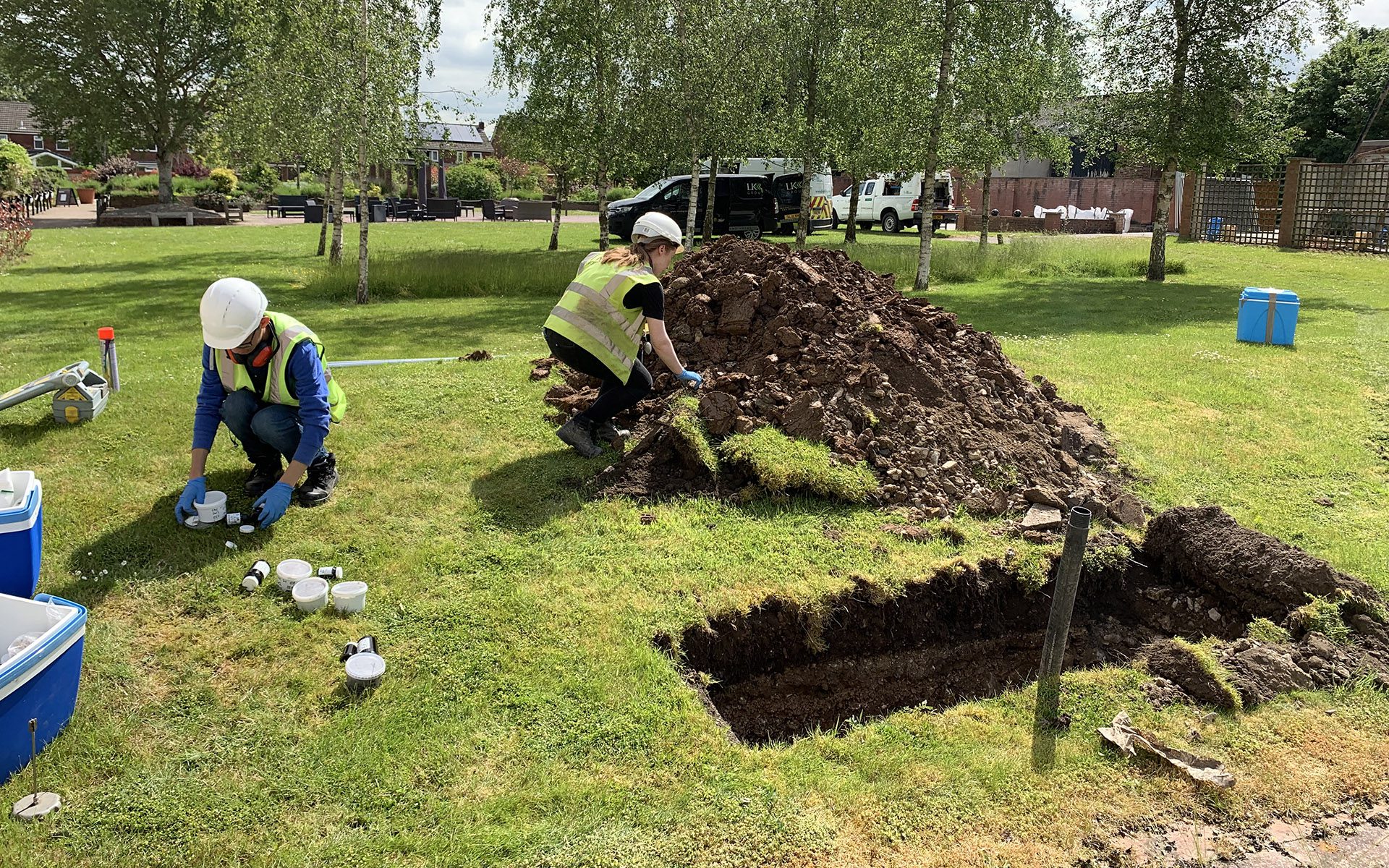
Soakaway testing
Soakaway Testing allows us to assess the drainage properties of the site. We dig a 2-metre pit, fill it with gravel and pour in water. Once filled, the water level will be measured and monitored to ascertain the rate at which it soaks away; hence the name ‘Soakaway’. These results will determine the drainage strategy and whether additional new drainage is required, including the installation of Sustainable Drainage Systems (SuDS).
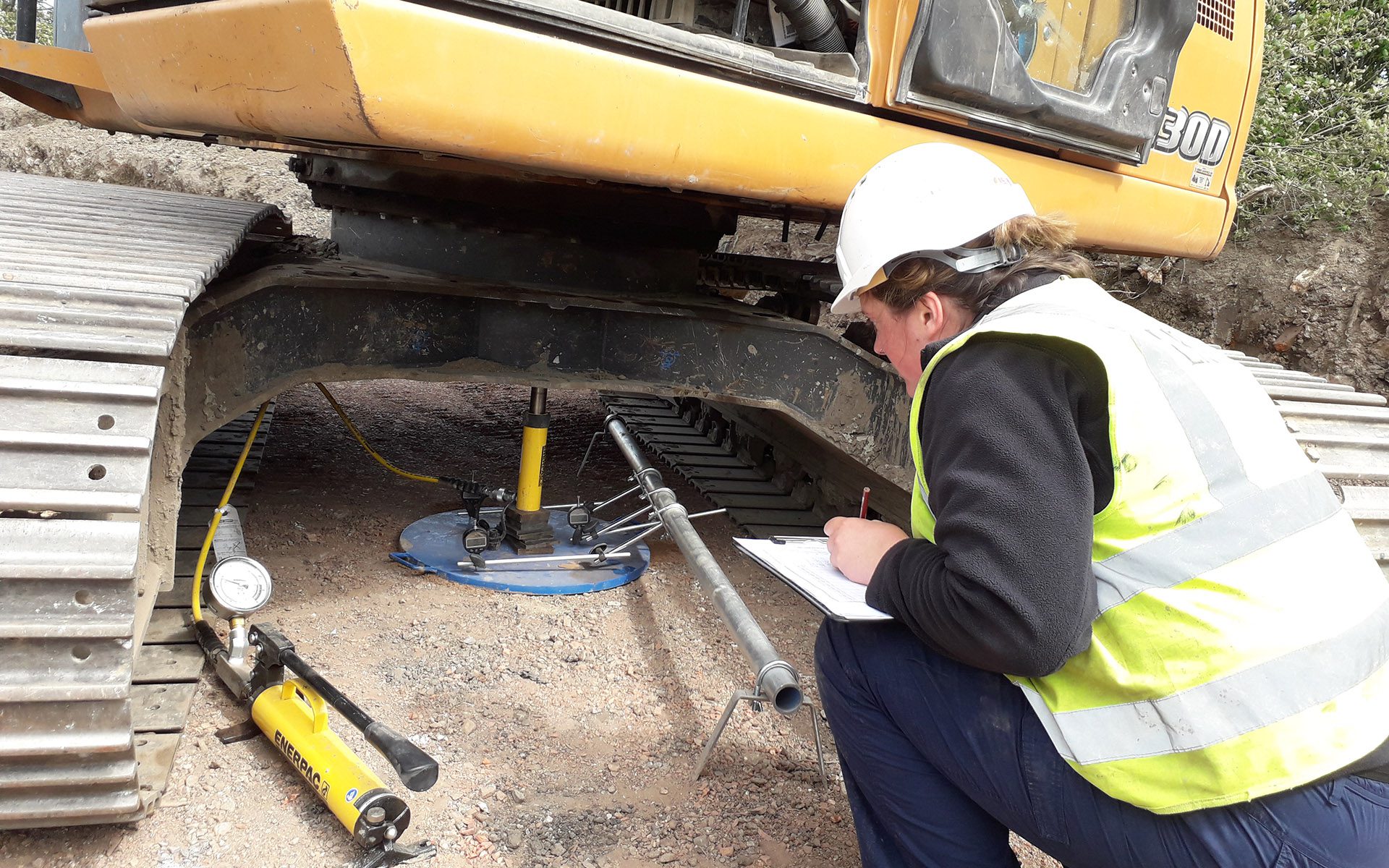
Plate bearing test
The Plate Bearing Test can be undertaken using a 300mm, 450mm or 600mm diameter plate to obtain the in-situ deformation characteristics of soil, the results can be provided as an equivalent California Bearing Ratio (CBR), Modulus of Subgrade reaction (k762) or ultimate bearing capacity (kN/m2).
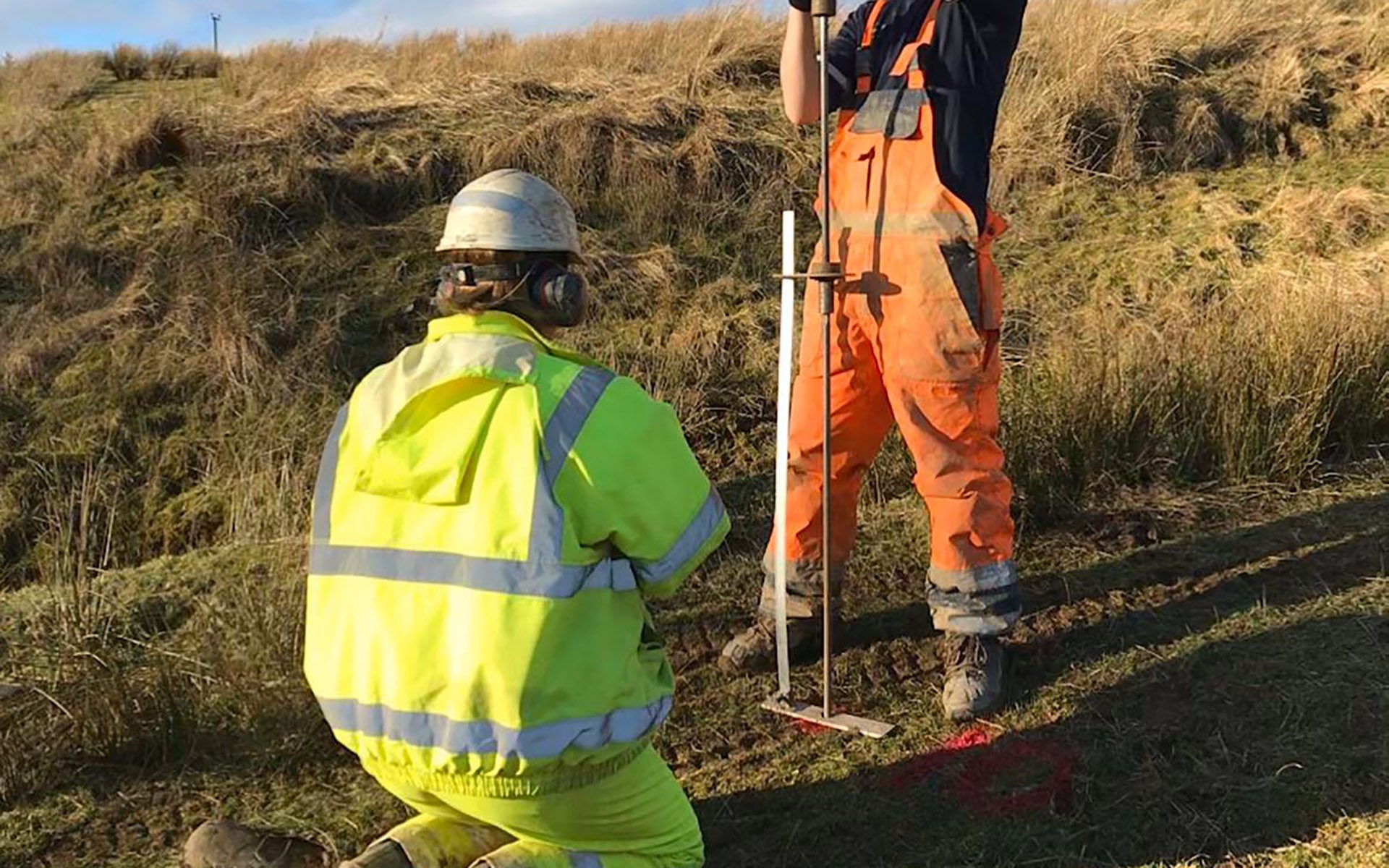
California bearing ratio (CBR)
The California Bearing Ratio (CBR) test is an empirical measure of soil strength. It is most often used on subgrade for road design and construction to determine the thicknesses of materials to be used. The stronger the material being tested, the higher the CBR value, which can lead to thinner layers of material being used, which in turn can reduce construction cost.
The CBR test often forms part of the overall site investigation and is useful for determining the thickness of materials needed for the proposed construction.
We can obtain the CBR value of a soil by several means. This could be through Plate Load Testing, when information for pile mat design or for mobile crane operations is required. We can also assess the CBR value of the soil using more rapid means such as a Dynamic Cone Penetrometer (DCP), which allows a profile of the shallow soils to be obtained to a depth of c. 1mbgl. We can also assess CBR values of the ground at discrete depths using the Clegg Hammer.
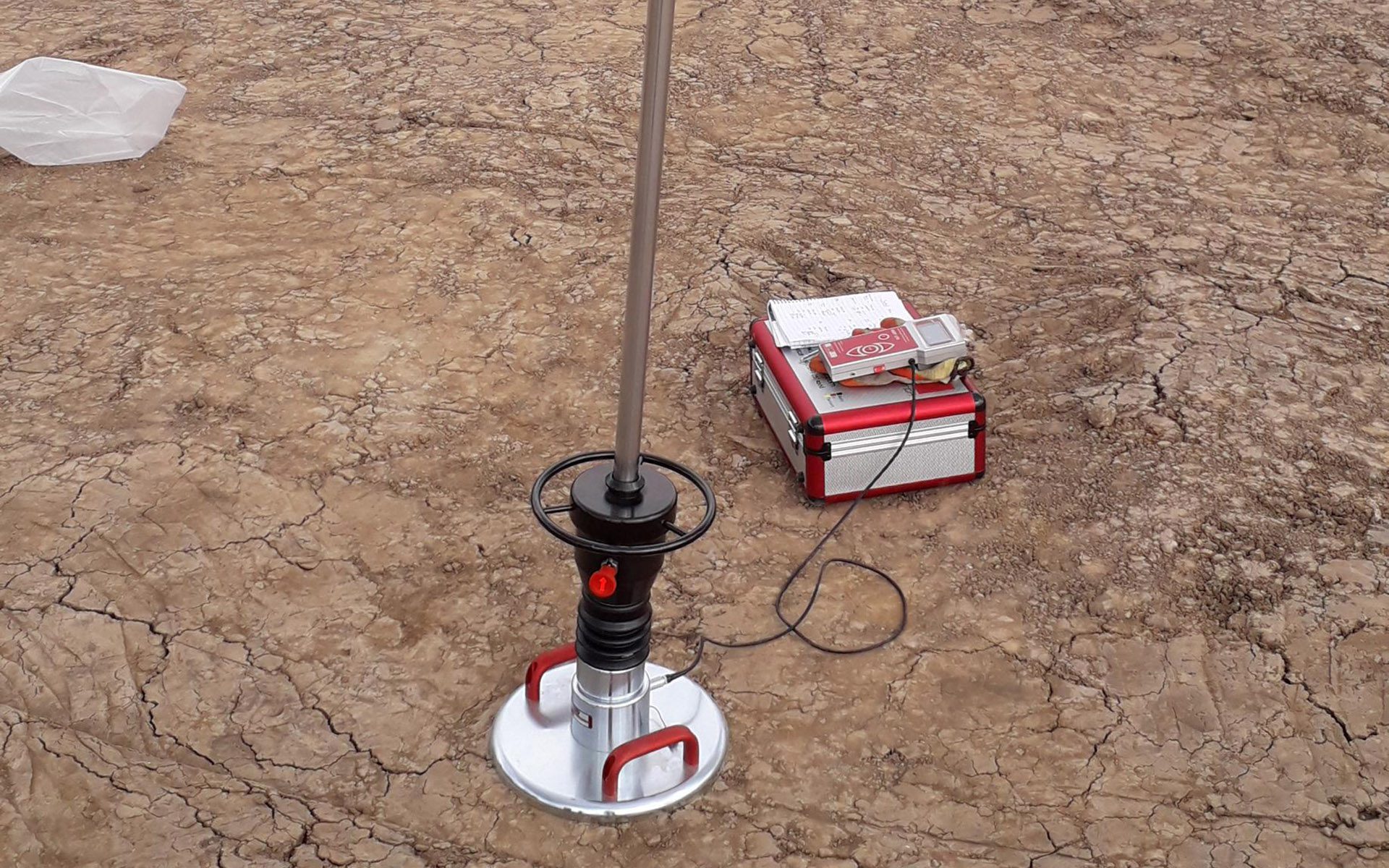
Lightweight deflectometer (LWD)
The LWD test measures the bearing capacity of soils placed in earthworks. The results obtained can be converted to an equivalent CBR value, confirming the suitability of the placed material.
The LWD utilizes a 300mm diameter plate and the zone of influence extends to between 1 and 1½ times the plate diameter making it ideal for testing layers upto 450mm thickness. The LWD allows rapid testing of placed and compacted material.
Latest case studies
Get in touch today
We have offices throughout the UK.
info@thelkgroup.com
0161 763 7200 Manchester
01793 987 390 Swindon
0151 235 8716 Liverpool
0141 773 6269 Glasgow
What our clients say
“It can be difficult to find a value-driven consultancy capable of offering meaningful and pragmatic advice at short notice. The LK Group does this. They tailor their services to a wide range of site-specific challenges on my sites and then get on with it. Their approach is always straightforward.”
Steve Lancaster
Director, Lancaster Maloney Limited
WHO WE WORK WITH
SERVICES
Geotechnical
Geotechnical site investigations, slope stability, earthwork designs, plate load tests, basement impact assessments, in-situ geotechnical testing, coal mining risk assessment.
Contaminated Land
Site investigation, risk assessment, de-risking sites, validation, coal mining assessment, basement impact assessment–contamination, remediation design and validation.
SuDS and Flood Risk
Flood risk assessment, SuDS assessment and design, soakaway testing, river modelling, fluvial geomorphology, geographical information systems.
Land Drilling
All-terrain & handheld window sampling, rotary drilling, dynamic probing, concrete coring, cable percussive, gas & water installations, foundation pits, soakaways, falling head tests, CBR tests.
Land Remediation
Specialist remdiation contracting, site clearance, ground improvements, bulk earthworks, soil stabilisation, pilling matt installation, remediation strategy, site enabling works.
Japanese Knotweed
On-site spraying treatment, burial cells, screening, high-performance geo-membranes installation, off site removal, steering member of The Invasive Non-Native Specialists Association.
Project Management
Client side project management and principal designer services to property developers, local authorities and property investors.
Air Tightness Testing
Air tightness testing and reporting, energy and sustainability reports.
